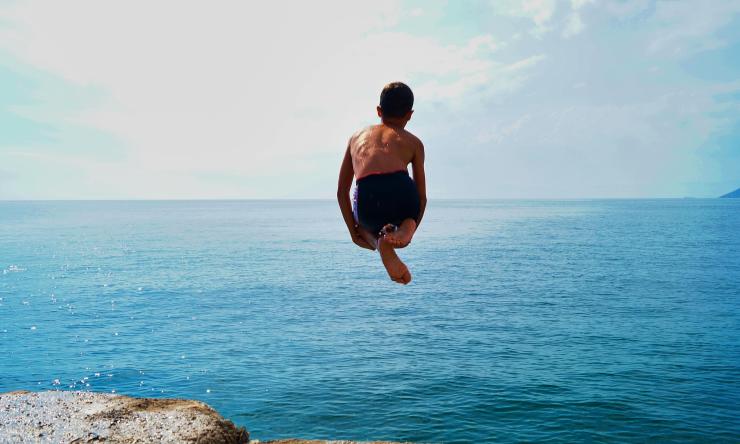Debunking dry drowning
Dry drowning is a common phrase used to describe an aftermath of drowning, but this is a misused term and does not accurately describe a medical condition. A Baylor College of Medicine emergency physician explains the effects of drowning.
Drowning is the process of experiencing respiratory difficulty from submersion/immersion in water. It can be fatal or nonfatal. Most victims who are rescued and experienced minimal symptoms improve within six to eight hours. If a patient develops worrisome symptoms of coughing and difficulty breathing within eight hours of drowning, they should seek medical care. Delayed symptoms after more than eight hours following drowning in well-appearing patients are rare.
“Dry drowning is not a correct term, and it should be retired,” said Dr. Rohit Shenoi, professor of pediatrics – emergency medicine at Baylor and Texas Children’s Hospital.
The term dry drowning was coined years ago based on autopsies in drowning victims that showed little to no water in the lungs. Dry drowning has sometimes been used to describe symptoms that develop hours to days after swimming or a nonfatal drowning event. However, Shenoi emphasizes the need to remove the phrase “dry drowning” from vocabularies as it is inaccurate.
Nonfatal drowning occurs when someone drowns and submerges their airway under water but is rescued. They might lose consciousness and can have some distress with breathing. Fatal drowning occurs when the airway is submerged under water and there is no oxygen supplied to the lungs and brain. This results in respiratory and cardiac arrest.
“There are certain proteins in the lungs called ‘surfactant’ that keep our air sacks open and prevent them from collapsing,” he said. “These proteins get washed away when water enters the lungs, which results in collapse of the air sacs, thus cutting off the air supply.”
Patients who suffer from drowning manifest symptoms early, within the first eight hours or so. Common symptoms among drowning victims who are rescued include coughing, trouble breathing and vomiting. If rescued early, the patient typically starts to breathe on their own after coughing and vomiting. Choking on water is not a sign of drowning.
If submersion is prolonged, the patient will become unconscious and stop breathing. They may experience cardiac arrest if not resuscitated early. These patients will require cardiac and respiratory support and intensive care. If they survive, there is a likelihood of them having aftereffects such as reduced cognitive abilities and physical disabilities. Those groups do not fare well, Shenoi said.
The age groups most commonly affected by drowning are children ages 1 to 4 years. They should never be left unattended or unsupervised around water. While drowning can occur in pools and bodies of water, kids can also drown in a few inches of water such as in bathtubs, buckets, coolers and toilets. If a bucket of water is unattended or a toilet seat is open, a child can trip and fall face-forward and drown. These cases can be fatal.
“You must be constant, attentive and close enough to hold your child in case something like this happens. This is called ‘touch-supervision,’ he said.
Shenoi outlines critical layers of protection to prevent drowning:
- Supervise all kids around water, especially those ages 1 to 4 years.
- Enroll in swimming classes: the ability to swim has been found to reduce the risk of drowning for children 1 year of age and above.
- Use life jackets. These are needed when boating in natural water. State boating law requires children under 13 years of age to wear a lifejacket on all watercraft.
- Learn how to perform CPR.
- Avoid consuming alcohol and substances when in and around water.
“A caregiver should know how to respond to a drowning. Avoid being a secondary drowning victim. Rescue should not be attempted if it places the potential rescuer in an unsafe situation. Instead, call for help as soon as possible,” Shenoi said.










